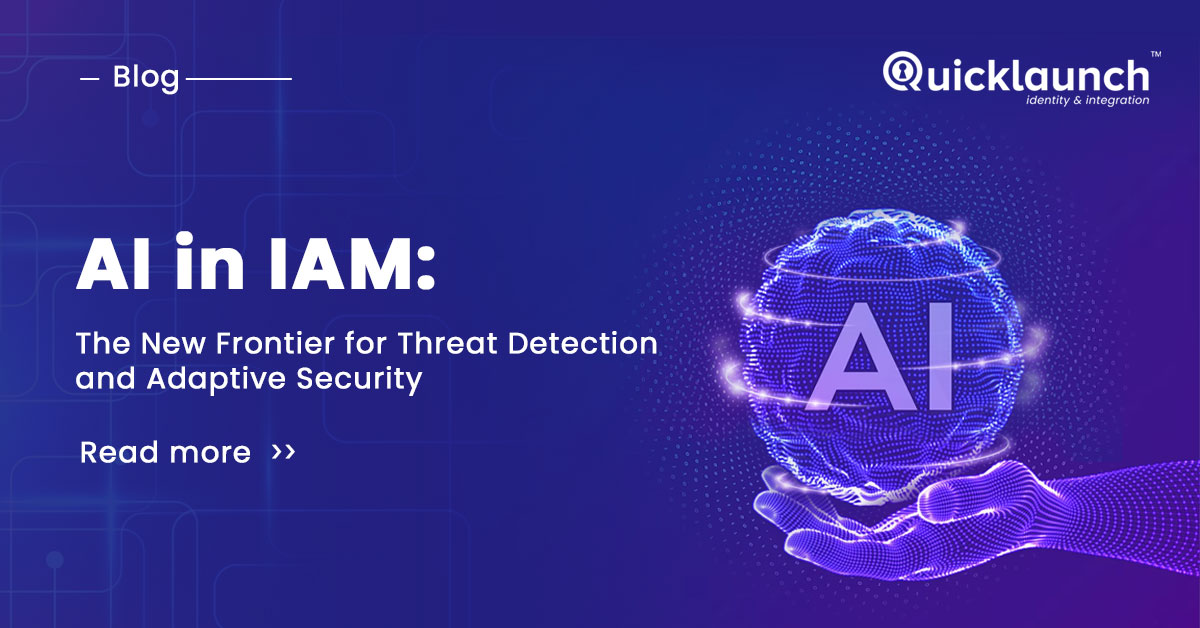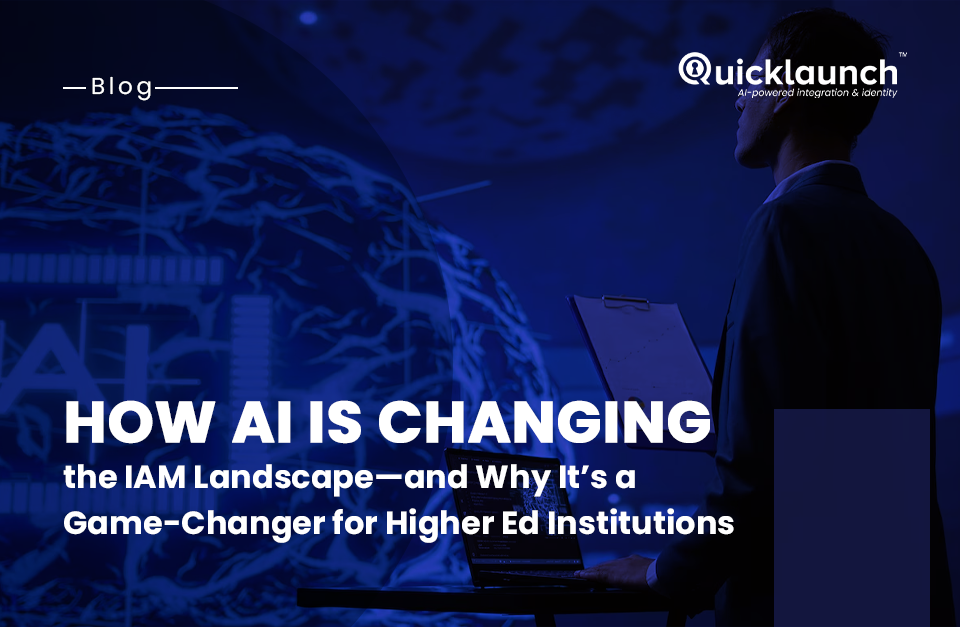AI in IAM: The New Frontier for Threat Detection and Adaptive Security

Overcoming IT Challenges in Public Universities with Scalable IAM Solutions
March 25, 2025
Managing Student Identities from Applicant to Alumni: Why Identity Lifecycle Management Matters
April 10, 2025
As higher education institutions rapidly adopt digital transformation, the demand for robust cybersecurity measures has never been greater. Colleges and universities manage vast amounts of sensitive data, including student records, research data, and financial information. However, the open and collaborative nature of higher education environments presents unique cybersecurity challenges. Traditional Identity and Access Management (IAM) solutions, while effective, are no longer sufficient to address the increasingly sophisticated threats targeting academia. Enter Artificial Intelligence (AI)—a game-changer in IAM that is reshaping the landscape of threat detection and adaptive security.
The Role of AI in Threat Detection
Traditional IAM systems rely on static policies and predefined rules, making them susceptible to modern cyber threats that exploit behavioral anomalies. AI enhances threat detection by:
- Behavioral Analytics: AI-powered IAM solutions continuously analyze user behavior to detect anomalies. If a user suddenly logs in from an unusual location or accesses sensitive data outside normal working hours, AI can flag these actions as potential threats.
- Machine Learning Algorithms: AI-driven IAM systems use machine learning to refine threat detection models over time. By analyzing vast amounts of historical and real-time data, these models can identify new attack patterns and automatically adjust security protocols.
- Insider Threat Detection: AI can detect suspicious activities from within the organization, such as unauthorized access attempts by employees or compromised credentials, preventing data breaches before they occur.
Adaptive Security with AI
AI-driven IAM doesn’t just stop at detecting threats—it also enables adaptive security, which dynamically adjusts security policies based on real-time risk assessments. Key aspects include:
- Risk-Based Authentication: AI assigns risk scores to authentication attempts based on various factors such as device, location, and login history. Higher-risk attempts may trigger multi-factor authentication (MFA) or additional verification steps.
- Automated Response Mechanisms: AI can automate security responses, such as temporarily locking accounts, prompting password resets, or escalating alerts to security teams when threats are detected.
- Zero Trust Implementation: AI enhances Zero Trust frameworks by continuously validating user identities and permissions, ensuring access is granted only to those with legitimate needs at any given time.
Challenges and Considerations
Despite its advantages, AI-driven IAM is not without challenges:
- Data Privacy Concerns: The collection and analysis of user behavior must comply with privacy regulations like GDPR and CCPA.
- AI Bias: Poorly trained models may introduce biases, leading to incorrect threat assessments or unfair access restrictions.
- Integration with Legacy Systems: Many organizations struggle to integrate AI-driven IAM with existing infrastructure, requiring careful planning and investment.
The Future of AI-Driven IAM in Higher Education
As cyber threats continue to evolve, the role of AI in IAM will become even more critical for higher education institutions. The future of AI-driven IAM includes:
- Zero Trust Security Models: AI will play a crucial role in enforcing Zero Trust principles, ensuring that every access request is continuously verified and monitored.
- Biometric and Continuous Authentication: Facial recognition, fingerprint scanning, and behavioral biometrics will enhance identity verification, reducing reliance on passwords.
- Integration with Cloud Security: AI-driven IAM will provide seamless integration with cloud-based applications, securing access to hybrid learning environments and remote education platforms.
The integration of AI into IAM is revolutionizing cybersecurity in higher education. By leveraging AI-driven analytics, adaptive authentication, and automated threat response, institutions can enhance security while maintaining seamless access for students, faculty, and staff. As cyber threats become more sophisticated, embracing AI in IAM is not just an option—it is a necessity for ensuring the integrity and resilience of higher education institutions in the digital age.




